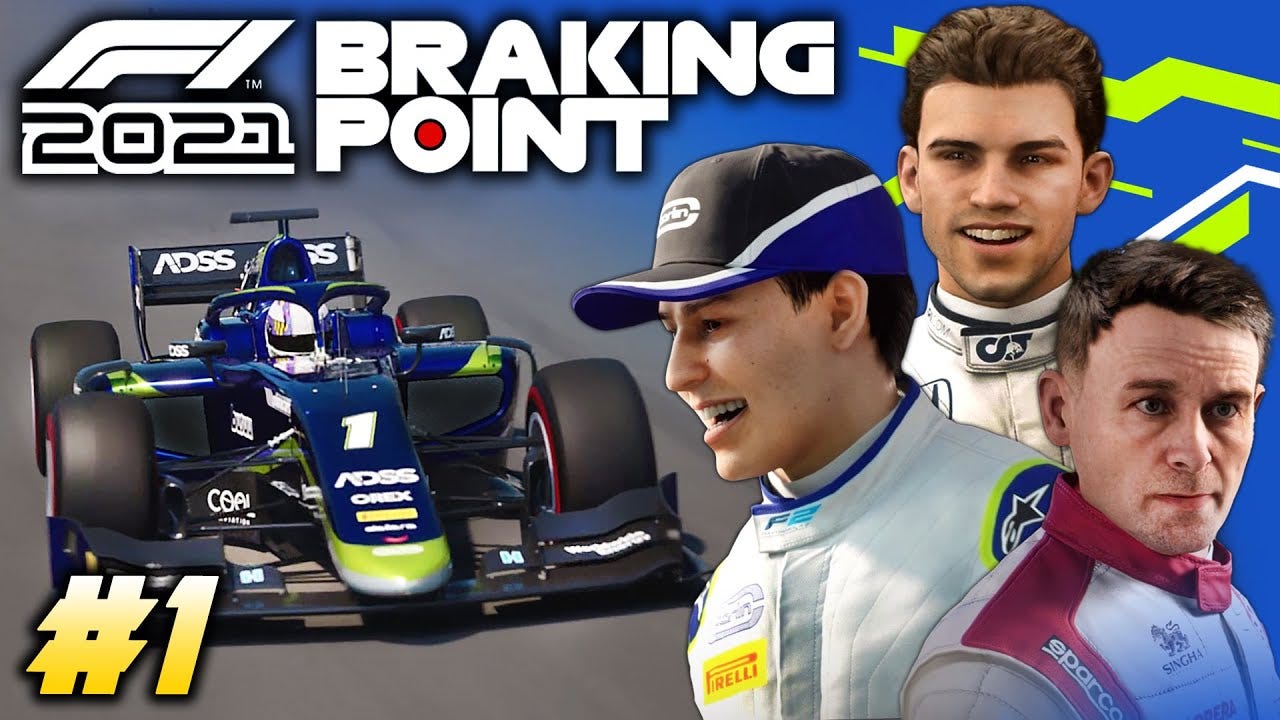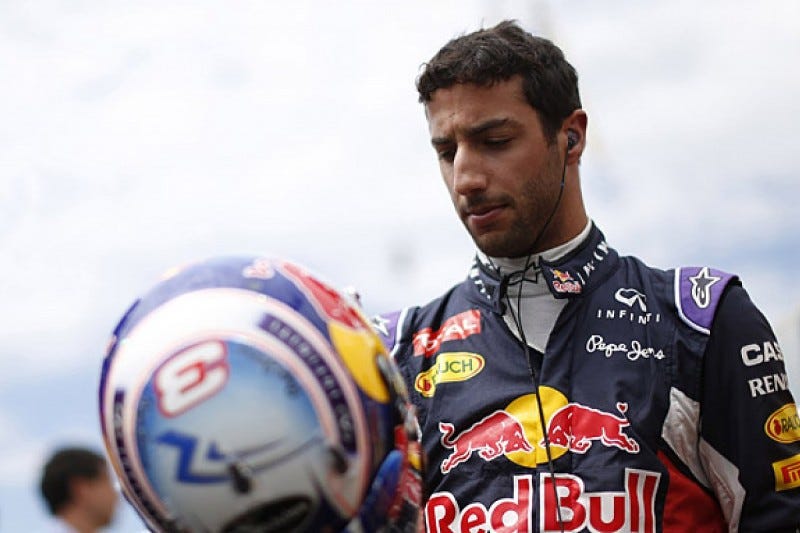The Installation Lap is a weekly Substack column dedicated to helping Americans develop a deeper appreciation for Formula 1.
In 2021, Codemasters, creators of the official Formula 1 video game, decided to give their offering a novel spin. They introduced a story mode for the game entitled “Breaking Point,” where you play as Aiden Jackson, a young promising Formula 2 driver on a quest for a seat in F1. As the narrative unfolds, Aiden must face all manner of social and racing challenges. His partner on this journey, Casper Akkerman, a teammate whose prime is in the rearview mirror, while Aiden’s arrogant shit-smear F2 rival, Devon Butler, also makes the leap to F1. The games gripping narrative is filled with twists and turns that reflect the thrilling world of Formula 1, painting a picture of a realm where reputation is every bit as critical as on-track prowess.

I bring up this video game story mode because the team at Codemasters made something truly interesting that drives at the heart of the real-life game of Formula 1. In this sport, a driver's reputation is as volatile as the stock market; it hinges on their most recent performance. The oft-quoted aphorism in F1 circles, ‘you’re only as good as your last race,’ begs the question, how does one weather a poor performance? How does a driver keep the circling critics at bay until a good performance resuscitates their reputation? It's a realm as unforgiving as the racetrack itself.

Just consider the real-life saga of Daniel Riccardo, a brilliant racer whose narrative is deeply intertwined with this struggle between performance and reputation. In 2014, Riccardo found himself racing alongside Sebastian Vettel, the then-reigning, four-time World Champion. The consensus at the time was simple: Vettel, at the height of his powers, would inevitably destroy Riccardo. Daniel’s goals for the season were to try and be as close to Seb as possible and deliver consistent performances, and learn as much as he could driving alongside a multiple world champion in his prime. What transpired was a dramatic departure from this expectation.

Riccardo won three races in 2014, while Sebastian’s best effort was a second place in Singapore and a few other podiums. Daniel finished the season third on the constructor’s standings (behind the now dominant Mercedes pair of Lewis Hamilton and Nico Rosberg) with 238 points, compared to Seb’s anemic 167. Suddenly the narrative had changed. In a sport that runs as much on gossip as it does gasoline, what was the paddock to make of this coup? The world had been turned upside down. Mercedes was now the dominant team leaving Red Bull in the dust, and Red Bull’s new Champion had been quickly dispatched by some brash young Aussie. Seven years, and three teams later, however, the wheel of fortune had turned again. Despite securing a historic victory for McLaren in 2021, Riccardo was consistently outpaced by his teammate, Lando Norris. Ultimately, Riccardo was bought out of his contract and relegated to being Red Bull's third driver. The cruel, cutthroat world of F1 had seemingly chewed up and spat out one of its brightest stars.
In Daniel’s case, on-track performance drove the narrative of his career. As Daniel climbed into worse and worse machinery, his reputation slowly plummeted. What’s frustrating about the Riccardo drama is that it is still widely believed around the paddock that Daniel is still the racer we’ve come to know and love, except now there is doubt surrounding him, and that doubt means that we may have well seen the end of Daniel Riccardo.
What someone like Daniel needs is a repetitional bump. However, without a seat, he has no opportunity to demonstrate that the old Daniel is still alive and well. Is there any way out of that cul-de-sac? I suspect the answer will reveal itself in the coming year. At the moment, Daniel is imprisoned in the minds of the F1 paddock. They are still seeing him trundle around in that McLaren and underperforming.
In the very recent past, one-off performances and substitutions have revived careers many believed dead. Nico Hulkenberg is a fine example of this. Bounced out of the sport at the end of 2019, he returned as a “Super Sub” twice in 2020 for the COVID-stricken Sergio Perez at Racing Point (which would later become Aston Martin) for the British Grand Prix and the 70th Anniversary Grand Prix at Silverstone (same track- two different races due to the pandemic). In the 70th Anniversary Grand Prix, Nico qualified in a brilliant third place behind the two Mercedes. Despite ultimately finishing 7th, the strong performance boosted Hulkenberg’s reputation. However, open seats are hard to come by in F1, so it was back to the real world for Nico. Later that same year, this time at the Eifel Grand Prix, Nico returned again to “Super Sub” for the ill Lance Stroll. Though he qualified 20th (dead last), Nico finished the race in 8th place! This, once again, burnished his reputation, eventually landing him a full-time drive with Haas. Nico was able to cease on two extremely rare opportunities, and his reputation rocketed upwards as a result, reviving his career.
On the flip side of the repetitional wars, we have the woeful tale of Daniel Kvyat. After Daniel Riccardo trounced Sebastian Vettel in 2014, and Vettel moved to Ferrari the following year, Kvyat took Vettel’s vacated seat at Red Bull. Kvyat had a good season in 2015. He became the second youngest driver ever to reach the podium in F1. He bagged three appearances on the rostrum that year and finished 7th in the Championship, beating his teammate Daniel Riccardo by three points. Unfortunately for Daniel Kvyat, a poorly timed mistake exposed him to a repetitional battle he simply couldn’t win. In his home Grand Prix in Sochi, Kvyat ran into the back of Sebastian Vettel in his new Ferrari. Twice. Seb didn’t like that one bit. This incident came on the heels of that year’s Chinese Grand Prix, where Kvyat aced Vettel on the opening lap, which, again, Seb didn’t like. F1 is a brutal business, but these two incidents were not enough to end Kvyat’s career. What those incidents did was provide an opening for the hyper-ambitious Jos Verstappen to force Red Bull to give his son, Max, a shot with the big team. At that moment in 2016, 19-year-old Max Verstappen had found his way into the Toro Rosso, Red Bull’s sister team (that team is now Alpha Tauri). Jos wanted Max in a top team, and he used Kvyat’s two rough races to leverage Max into the seat. So it came to be that Daniel Kvyat was demoted to Toro Rosso, and Max Verstappen was promoted to Red Bull for the Spanish Grand Prix in 2016. In that GP, Max’s first race for the Red Bull team - he won. That race announced the arrival of Max and the end of Daniel Kvyat.

The stakes are high, and the margin for error is slim. Nyck de Vries and Logan Sargent, two of this year’s rookie class, are already feeling the pressure. Both seem to be struggling and without a few good races under their belts, they could soon find themselves facing a reputational crisis. Despite the hurricane of demands on a driver’s mind and attention, one can never neglect reputational management. Formula 1 is a battlefield, where every millisecond counts, where consistency is key, and where near-perfection on the track is demanded. But as they step out of their cars after an exhausting race, they must slip into another gear and navigate the equally challenging arena of public perception. A driver's survival in this high-stakes sport relies on their ability to be swift on the track, strategic off it, and always aware of the delicate balance between their performance and reputation.





